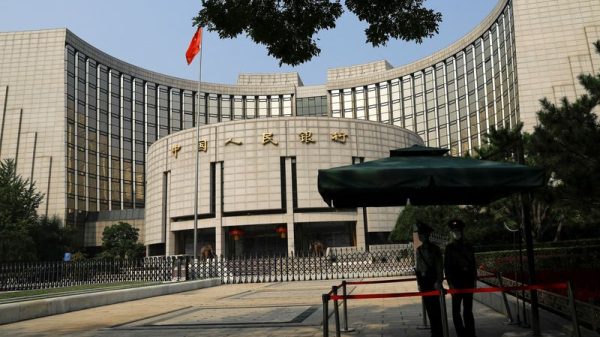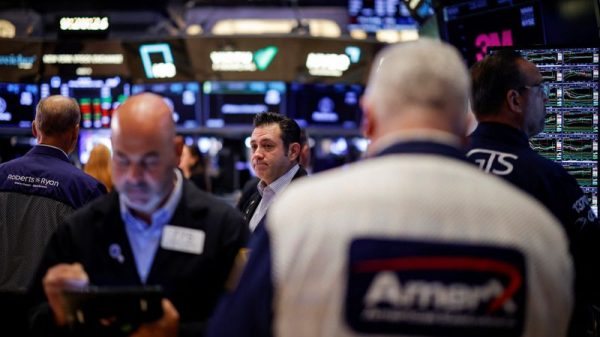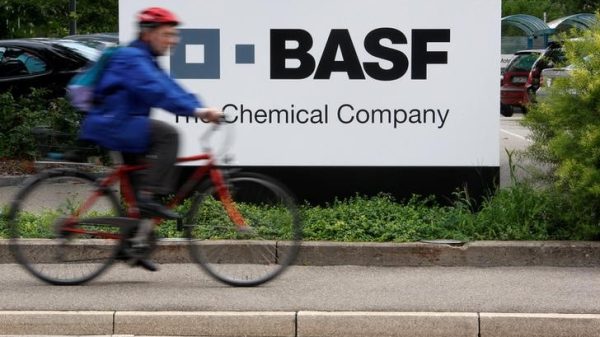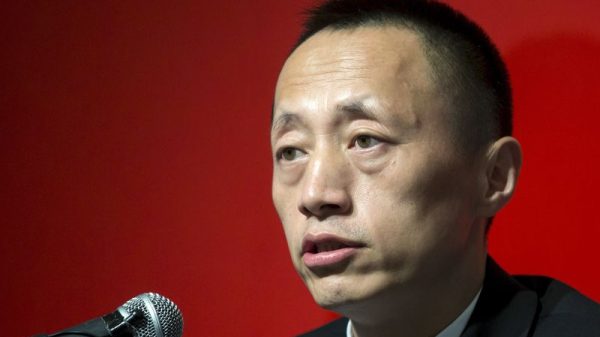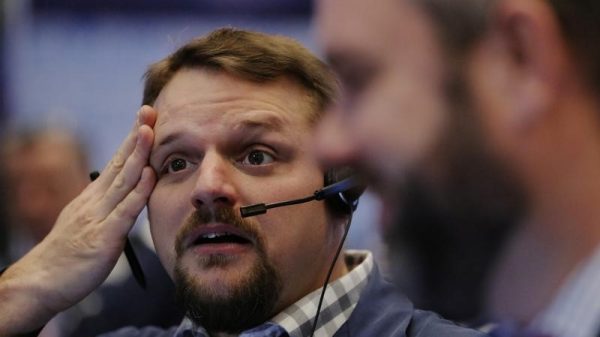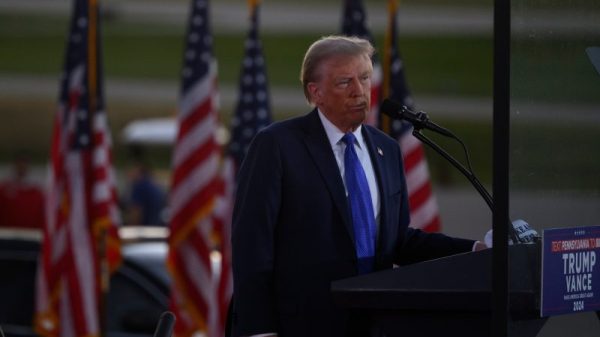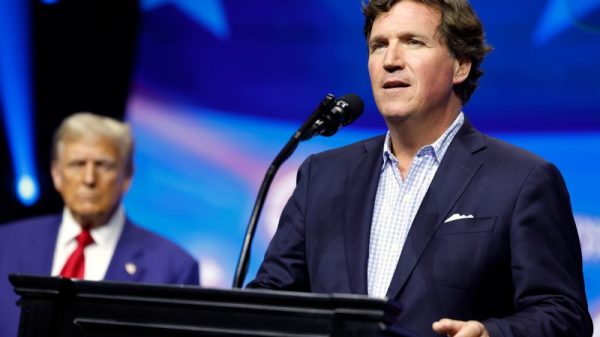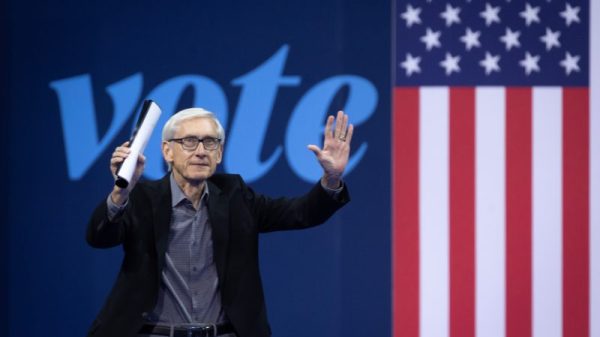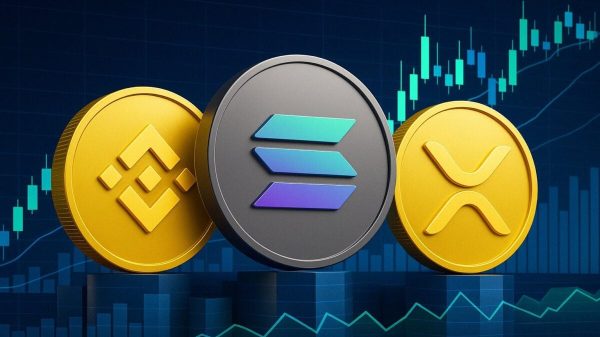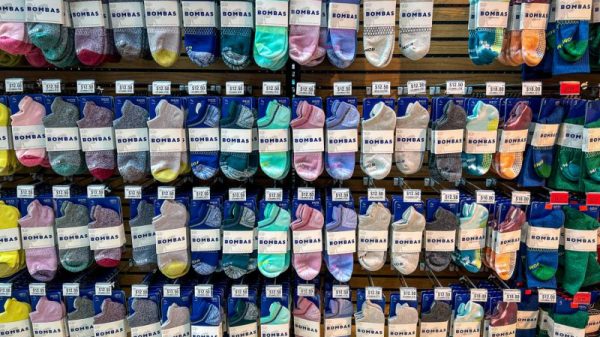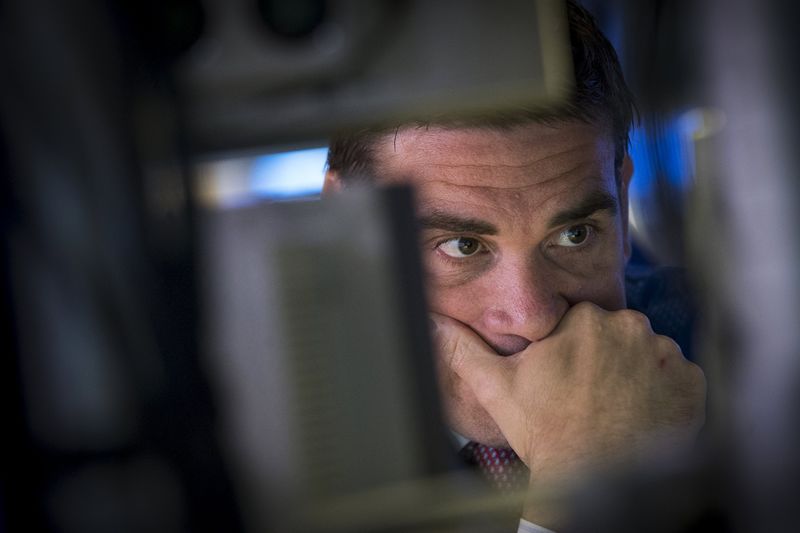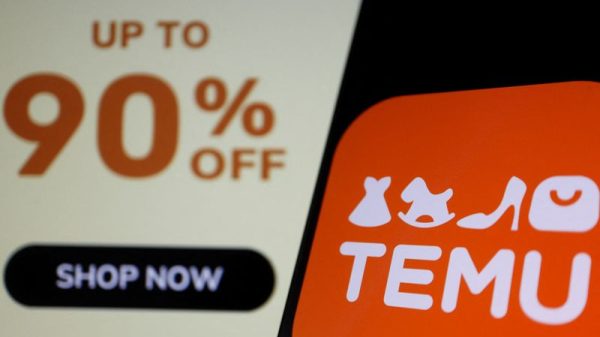Syrah Resources (ticker not provided) discussed its third-quarter performance in 2024, highlighting the challenges and opportunities it faces in the evolving electric vehicle (EV) and graphite markets. CEO Shaun Verner emphasized the company’s commitment to operational readiness and financial prudence during the earnings call.
Despite no production at its Balama site due to community protests and halted production, Syrah is focusing on maintaining production readiness and minimizing costs. The company reported a cash position of $61 million as of September 30, 2024, with $41 million restricted for Vidalia operations.
Key developments include the finalization of a $150 million loan from the U.S. Development Finance Corporation (DFC) and ongoing product testing with Tesla (NASDAQ:TSLA) for potential purchases in 2025.
Key Takeaways
Syrah Resources received a $150 million DFC loan to support Balama’s working capital and liquidity.
No Q3 production at Balama; sales relied on inventory due to community protests.
North American EV market growth is slowing, affecting anode material demand.
Syrah is navigating market uncertainties, including U.S. and global policy shifts.
The company ended Q3 with $61 million in cash, including $41 million restricted for Vidalia operations.
U.S. policies may offer tax credits for domestic anode production, challenging Chinese competition.
A 25% tariff on Chinese graphite imports could benefit U.S. competitiveness.
Syrah is committed to resolving community issues at Balama and enhancing safety after a significant injury.
Vidalia’s product testing is progressing, with Tesla as a potential customer in 2025.
The company is pursuing key offtake agreements and focusing on the U.S. market over the U.K.
Shifts in the Chinese anode market are affecting global dynamics, with Syrah aiming to increase sales and production.
Company Outlook
Syrah is working to leverage its market position to navigate current challenges.
The company is focused on increasing sales and production for positive cash flow.
It aims to capitalize on potential U.S. tax credits and policies to support domestic anode production.
Bearish Highlights
The EV market in North America is experiencing slowed growth.
Community protests have halted production at Balama.
The company reported a significant lost time injury at Balama, prompting safety concerns.
Bullish Highlights
A $150 million DFC loan has been finalized, improving liquidity.
U.S. policy shifts could favor domestic anode production with tax credits.
Tesla is moving towards purchasing anode material from Vidalia in 2025.
Misses
A significant contract was not finalized due to customer hesitance over policy changes.
Discussions for a U.K. joint venture have ceased.
Q&A Highlights
Questions were raised about a postponed second shipment from BTR and stalled U.S. agreements.
Syrah reported strong sales outside China with a high average realized price.
A production campaign is planned for December, targeting 20,000 tonnes.
In conclusion, Syrah Resources is navigating a complex market landscape with strategic focus and financial caution. The company is addressing operational challenges and market uncertainties while preparing for future growth opportunities in the graphite and anode production sectors. Syrah’s management remains committed to enhancing shareholder value and achieving operational cash flow in the face of shifting global market dynamics.
InvestingPro Insights
Syrah Resources’ (SYAAF) recent financial performance and market position are reflected in several key metrics from InvestingPro. The company’s market capitalization stands at $191.45 million, indicating its current valuation in the market. This relatively modest market cap aligns with the challenges outlined in the earnings call, particularly the production halt at Balama and the evolving EV market dynamics.
InvestingPro data shows that Syrah’s revenue for the last twelve months as of Q2 2024 was $38.37 million, with a concerning revenue growth decline of -54.78% over the same period. This significant drop in revenue correlates with the production issues at Balama and the broader market slowdowns discussed in the earnings call.
Two relevant InvestingPro Tips shed light on Syrah’s current financial situation:
1. “Quickly burning through cash” – This tip aligns with the company’s focus on financial prudence and the importance of the $150 million DFC loan mentioned in the earnings call.
2. “Suffers from weak gross profit margins” – This is evident in the reported gross profit margin of -146.3% for the last twelve months as of Q2 2024, underscoring the operational challenges the company faces.
These insights from InvestingPro provide additional context to Syrah’s financial health and market position, complementing the information from the earnings call. Investors seeking a more comprehensive analysis can access 8 additional InvestingPro Tips for Syrah Resources, offering a deeper understanding of the company’s financial metrics and market performance.
Full transcript – Syrah Resources Ltd (SYAAF) Q3 2024:
Operator: Thank you for standing by, and welcome to the Syrah Resources Q3 Quarterly Report Update. All participants are in a listen-only mode. There will be a presentation followed by a question-and-answer session. [Operator Instructions] I would now like to hand the conference over to Mr. Shaun Verner, Managing Director and CEO. Please go ahead.
Shaun Verner: Thanks for joining the call. With me this morning are Stephen Wells, our Chief Financial Officer; and Viren Hira, our General Manager of Business Development and Investor Relations. We’ll reference some of the slides released along with the report on today’s call. The third quarter of 2024 saw both continuing EV industry growth and significant uncertainties evidenced in the global lithium-ion battery, active anode material and graphite markets with Chinese dominance of sales growth and EV penetration, but varied growth rates in other markets. China’s dominant position in lithium-ion battery and anode production continues to extend. The global markets for these finished goods and input materials are in the midst of a series of high-impact policy decisions across China, the U.S. and Europe in particular, as well as other growing jurisdictions. And many of these policy decisions potentially have binary outcomes. In light of this volatility and despite our challenging operating and cash flow position, Syrah’s strategy is to ensure production readiness and development progress beyond others in the ex-China integrated natural graphite anode material and input feedstock production. But this strategy must be supported by cost minimization and cash preservation, protecting the asset base and ensuring we’re set to take advantage of market and policy conditions as they evolve. Turning to Slide 5. During the third quarter, we were focused on sales from inventory for Balama with no production campaign being run, progression of the DFC funding through a delayed and significant set of approvals that has now reached binding conclusion, increasing production expertise and progressing qualification towards sales of Vidalia anode material to Tesla and other customers and significant government engagement regarding policy settings, particularly for the U.S., but also with regard to Mozambique and China. Whilst the natural graphite fines market is showing the first signs in many months, slightly more activity, the challenges have remained and cash outflow has continued with both Balama and Vidalia impacted by the timing of demand, albeit for very different reasons. We’ll outline these asset positions today, but we maintain that despite the very real challenges faced by the company, Syrah demonstrates industry criticality through relationships with the U.S. government and major OEM and battery customers and only Syrah is currently poised to benefit from any near-term catalysts. Starting with the DFC loan, which Steve will comment on further later. The unexpectedly long process for approvals under the DFC loan took the major outstanding step towards finalization last week with approval required from the Mozambique Council of Ministers being granted after many months of communication and the loan is now binding with disbursement processes to follow. The execution of this loan shores up Syrah’s runway significantly, providing an important Balama working capital backstop even if the most challenging market conditions from China continue as it provides a bridge to ex-China natural graphite demand growth. Progress of the loan has been a significant effort over more than three years from Steve and the broader Syrah finance team, the DFC team and various service providers. It’s an important indicator that both the DFC and the U.S. Department of Energy is strategically embedded into Syrah’s funding, highlighting the importance of both Balama and Vidalia to the graphite critical minerals position of the U.S. and other ex-China markets. With $150 million available under the 13-year loan and an initial disbursement imminent for Balama and for upstreaming to provide parent company liquidity, this loan is critical to Syrah’s immediate funding position. The binding commitment is a great milestone and our focus turns to efficient disbursement processes that are important to our unrestricted liquidity position. We continue to work through these processes with all stakeholders, noting that some challenges have been seen through the post-election interruptions to normal availability in Mozambique. We’re working hard with our U.S. funding partners at both the DOE and DFC as current geopolitical, market and policy circumstances are not simple to navigate. And in some cases, impacts are driven by competing aspects of U.S. policy. Getting to this point with funding has required strong communication, a degree of flexibility, [Technical Difficulty] policy of market conditions have evolved. We’re very focused on reaching a more stable period ahead where these loans are operating procedurally. I wanted to touch now on the broader industry context. Both equity performance and commodity price performance of the majority of battery materials has been volatile for most of calendar year 2024. In nearly all cases, that volatility has been driven by the actions of or reactions to China with Syrah and graphite no exception. Whether an EV and battery producer or an input materials producer, what remains critical to long-term equity value is the market position that your organization holds relative to Chinese players at the same point in the supply chain. Pace of and position in market development, competitive leverage and industry consolidation dynamics are all being driven by Chinese policy and market activity and the responses of the U.S. and the EU to those dynamics. China continues to dominate this EV and energy storage supply chain. And as we show on Slide 8 of the presentation, in the immediate term, North American EV sales growth has slowed through 2024. And some of the forecast EV demand has been moderated with planned auto and battery capacity expansion time lines in some cases, also being adjusted, which has ultimately flowed through to anode material demand. What remains critical strategically and in preparation for the future of input material production is asset quality, expertise and development readiness. You can’t participate in the market developments or consolidation opportunities without operating progress and funding certainty. An attractive cost position and demonstrated product quality through qualification are also key differentiators. Balama remains the premier asset in natural graphite globally and a very strong operating team manages to drive campaign production volumes of high-quality material within the extremely challenging market conditions. Equally, at Vidalia, whilst progress has been slower than we hoped towards sales qualification, the learnings in production and qualification processes ex-China are enormous and we’re banking important development and operating experience in advance of other projects. We recognize that the investment and patience required from shareholders has been very significant and that the value we describe here is not yet reflected in the share price, but our focus on preservation of asset optionality and readiness is paramount to realization of that future value. Turning to Slide 9 and linking back to the comment I made earlier about just how many potentially binary market and policy factors exist in the graphite and anode space today. Syrah’s position of readiness remains unique with so many factors having turned against ex-China capacity development over the past two years. Any swing back to a requirement for ex-China natural graphite feedstock or U.S. domestic natural graphite anode material positions the company strongly. Upside risk is evident in a number of potential changes such as China supply risk given the potential use of government export license controls, Chinese domestic policy development, including potential economically driven consolidation or policy-driven rationalization of overcapacity, potential environmental controls focused on emissions or power consumption in China or requirements for import approvals or costs on [Technical Difficulty], in the U.S., the evolution of import controls on tax credits and supply chain resilience, ongoing changes to global tariff policies and overall trade policy positioning in the U.S. dependent on electoral outcomes. With all this in mind, despite it requiring a significant cash investment and focus on further reducing costs, we’re convinced of the importance of maintaining operating capability. Evidence of the expected growth in ex-China fines demand from 2025 onward will support Balama and the need for domestic production of natural graphite anode material in the U.S. sustains the importance of the Vidalia position. I’ll come back to more detail on the assets and our markets later. But first, I’ll hand over to Steve to talk through the finance and funding position and an update on some of the relevant government policy positions. Steve?
Stephen Wells: Thank you, Shaun, and good morning, everyone. Turning first to our cash position. As of 30th of September, Syrah had total cash of $61 million, including $41 million of restricted cash, which is Syrah cash held-for-use by the Vidalia asset for operating costs, minor capital improvements as well as standard lender protection reserves and it’s restricted under the DOE loan. The remaining $20 million in unrestricted cash [Technical Difficulty] accounts that are used for Balama, corporate expenses and any additional group requirements. Clearly, as the DFC loan is finalized, that loan will reduce any cash draw from Balama for an extended period as it relates to unrestricted cash. The reduction of $20 million from unrestricted cash through the quarter included $7 million to Vidalia for additional capital works to support qualification processes and debt service. We don’t expect further capital requirements of this type for Vidalia going forward. Corporate and related expenses were $4.5 million with $1.3 million of legal expenses relating to the finalization of the DFC loan. The remaining $8.5 million is related to Balama net cash outflows, which reduced operations to minimize cash outflow offset by sales receipts. In conjunction with this quarterly release, we are also very pleased to announce today the signing of binding loan documents with the DFC. This is a very significant milestone as the loan will support the net cash outflow from Balama through a challenging market period in the near term as well as provide liquidity support for the parent company through a contribution to the parent company. As Shaun outlined, it has been a challenging process requiring a series of approvals, which have all taken longer than expected. However, signing of the finance agreement and related documents has been achieved and we are now targeting funding of the loan as soon as possible. Turning to Slide 10 on U.S. government policy in particular. The geopolitical backdrop to the evolution of ex-China AAM market conditions continues to be mixed and variable with changing dynamics across both China and U.S. government policy in particular. Although, the implementation of the two year transition rule in May 2024 allowed U.S. auto OEMs a longer period to access tax credits whilst still utilizing Chinese-sourced graphite and anode, it did incorporate a mechanism for OEMs to be required to demonstrate support for the development of anode production facilities in the U.S. Final determinations on whether OEMs have been successful in demonstrating the required support and supply from non-FEOC AAM producers to be ready for [Technical Difficulty]. In our view, OEMs and the regulators continue to walk a thin line with vehicles remaining eligible for the very significant consumer tax credits under the 30D program and the steps they need to take to have alternate supply in place. Given the abundance of cheaper Chinese anode material in the U.S. and with a historically ineffective tariff regime in place, it is clear that absent OEMs being required to support the domestic anode supply chain as a result of the implementation of the transition rule or other policy changes, development of the U.S. anode supply chain will stagnate rather than progress. While policy progress under the current administration is occurring and the policy intent is clear, i.e., the development of a U.S. anode capability, the absence of any further offtakes being announced and no meaningful purchase volumes in place for domestically available material compared to cheaper Chinese material, mean that support for the build-out of the domestic supply chain is not certain by any stretch. On that basis, future tax credits for OEMs should be at risk if there is a substantial build-out of anode production capacity in the U.S. There is especially challenging from a relativity perspective in a world where almost $3 billion of consumer tax credits on EVs are expected to be claimed in 2024 by U.S. OEMs, significantly above initial U.S. treasury estimates. The more recent developments have trended towards advantage for Syrah and positively, the reapplication of existing tariffs of 25% on imported Chinese natural graphite and artificial graphite AAM being in effect from June ’24 was very welcome news for the competitiveness of domestically produced material against the subsidized Chinese imports. But statistics currently demonstrate lower coverage against imported goods that would be expected given the volumes being consumed. We expect that this will be an area of strong interest for customers and [indiscernible] authorities in the coming year. Final guidance on the 45X production tax credits have been released and including the cost of the import raw materials, even if those are mined outside North America, they are claimable if non-FEOC, which we estimate will provide around $0.70 per kilo benefit to the Vidalia AAM cost base. And the next round of 48C capital tax credits are also underway with auto OEMs seeking to demonstrate support for future capacity in that process. Syrah is cognizant that many — much uncertainty is riding on the outcome of the upcoming U.S. elections. Whatever the outcome, we expect that the greater activity will be evident in the sector after the completion of the election irrespective of administration. There remains great opportunity for the U.S. to further refine policy to accelerate domestic AAM production and sales, especially where capacity has already been built or there are options for expansion. If the government is truly dedicated to seeing the build-out of the domestic production capacity for battery materials, policy must drive support from OEMs to reduce their reliance on and benefit from aggressively dominant and subsidized Chinese production. As Shaun noted earlier, across many markets, including but not limited to graphite, this capacity domination is driving unsustainably low pricing in many cases, below the cost of production with the aim of China driving out ex-China competition and monopolizing the markets. For investors in and observers of Syrah, there are many catalyst developments to watch for in this space. And I’ll now pass you back to Shaun.
Shaun Verner: Thanks, Steve. Moving to Balama, where we are not currently in production mode given campaign operations and Syrah did not produce in Q3 with sales coming from accumulated inventory, operational focus in the quarter was on maintenance activities and ongoing readiness and process development. Post quarter end, we’ve been dealing with a community protest action, which is impacting our ability to freely access site and inhibiting scheduling of our next production campaign. This action caused by a small number of landholders nominally related to dissatisfaction with resettlement land and compensation received prior to the commencement of the Balama operation. Over the course of development of the mine processing facility and support infrastructure, around 800 small farms or Mozambers (ph) with no homes were resettled through a detailed joint government and company process. The commencement of the protest several weeks ago coincided with the Mozambique national elections and the instigators appeared to have conflated other issues and have taken advantage of the authorities’ focus on other challenges surrounding the election. Importantly, historical audits and third-party independent reviews of our resettlement practices through various accreditation processes, including consultants for funding and as part of our IRMA audits have seen Syrah as positive and responsible developer and operator. And a recent resettlement audit from a provincial government appointed committee demonstrated the company has complied with all legislative requirements. Whilst the protest actions which impede access are illegal and are acknowledged as such by the authorities, we’ve been patient and are working through the relevant legal and government channels towards resolution. The company is absolutely committed to resolution aligned with both the legal framework under the Balama Mining Agreement and to utilizing the processes available to us to ensure a long-term aligned solution. Should any deficiency be demonstrated in either the resettlement process or outcome, the company remains very open to dialogue and rectification through the appropriate mechanisms. Whilst this issue is being resolved, we’ve demobilized operating staff and are working with the relevant authorities on returning to normal conditions. During Q3, the Balama team dealt with the first significant lost time injury at the operation in almost six years. As a team, safety is critical to our identity and approach. And given the campaign operating mode, we’ve been very focused on risks around concentration and commitment to process discipline when operating intermittently. The incident, which occurred during a response to a minor scrub fire outside solar array led to an employee suffering a permanent impairment injury. The company has ensured high-quality care for the individual and support for his family and will be seeking to ensure that he can return to full employment in the future. The learnings from the incident investigation are currently being finalized. Our ESG position and reporting transparency are critical to the company. We’ve maintained strong community support and have a broad set of development initiatives, including health, education and training, sustainable income generation, infrastructure and other community building programs. In Mozambique for Balama, we’ve been recognized in country as award-winning on this front. In the U.S. at Vidalia, our efforts have been focused on education and skill acquisition as well as employment opportunity in what’s a historically economically disadvantaged area. Across a range of sustainability parameters as well as mining assurance, tailings storage, audited greenhouse gas emissions intensity and human rights and modern slavery analysis, Syrah is fully committed to reporting and continuous improvement, fundamentally differentiating our position from Chinese incumbent producers that dominate the natural graphite and anode material industries. Our quarterly sustainability report released on our website today, along with this update, emphasizes the importance and magnitude of this effort. Another key focus at Balama during Q3 was readying TSF Cell 2 for first tailings deposition concurrent with Syrah’s ongoing progress towards the ICMM system compliance, the industry’s revised and improved standards for tailings storage facility operations, compliance and monitoring. Deposition into Cell 2A will commence from the next production campaign. Turning to Vidalia. Syrah has made excellent progress in product testing toward qualification for anode material from Vidalia with multiple customers passing the product through various stage exits of their qualification processes. Most importantly, Tesla continues to progress the material through qualification towards purchasing in 2025. Syrah’s own testing of product is showing strong performance in cell testing results from concurrent samples of those dispatched to customers. Some performance data is provided on Slide 19, exhibiting purity, particle size distribution and surface area as well as first cycle efficiency and discharge capacity. Cycle life analysis also continues and customer feedback so far demonstrates the performance there has been at or better than reference materials. Operating capacity utilization at Vidalia was low through Q3 with no near-term demand as we await qualification progress and therefore, no need for inventory build. The Vidalia team is focused on activity to ensure that learnings from operations are implemented and embedded to drive operating efficiency and reliability, particularly in the milling and purification areas. Furnaces 3 and 4 have now also been ramped up with the team ready to push operating rates as qualification progresses. We’ve also allocated some capital to minor optimization opportunities identified in initial operations and customer interactions. In the time that’s been made available to us, we continue to work on additional product specifications for various customers beyond our standard CLP-18 or Coated Bleached Purified 18-micron products. And these further specifications are focused on customer targets related to their blends or particular battery performance parameters. Review of operating costs for production so far has seen initial guidance moving into calendar year 2025 increased due to power, labor and maintenance. The 18% increase in OpEx to $4.31 a kilogram is likely to be more than offset by production tax credits from the 45X program, with the team also focused on efficiencies and opportunities to improve costs as more operating experience and greater capacity utilization is achieved. Lastly, on Vidalia, we continue to progress three key offtakes with deliveries proposed within the next several years. Disappointingly, a significant contract, which was at the stage of finalization last quarter did not progress through Q3, and we believe that a number of offtakers are awaiting policy evolution around 30D tax credit implementation requirements and potentially the election outcomes before progressing. Regardless of the election outcome, domestic production of anode material will be important. And once greater certainty on the policy settings is evident, we expect further offtakes to be confirmed, both for the remaining Phase 2 tonnage and underpinning further development towards a 45,000 tonne capacity Phase 3 development. We do note that strategically, the progress of Phase 3 is fully dependent on that offtake progression and funding as well as demonstration of sales from the existing Phase 2 facility. With our major focus being in the U.S., we have discontinued discussions with Tees Valley Graphite regarding the establishment of a joint venture for a potential anode facility in the U.K. Moving finally to the market and commercial outlook on Slides 6, 7 and 8. The natural graphite and anode material markets continue to demonstrate markedly different China and ex-China developments through the quarter. Global EV sales increased and were up 17% year-on-year in the quarter with very strong growth in China. The U.S. sales outlook has been challenging through the year and demand for natural graphite imports is expected to strengthen in 2025. Europe has been disappointing so far this year with sales growth in China remaining the dominant force overall in global EV and battery growth. Accordingly, whilst anode material production in China continues to grow strongly, it’s been heavily weighted towards artificial graphite anode material satisfying domestic demand in China. Natural graphite fines prices in China remained at historical lows in Q3 with net China trade remaining low. Fines demand was again minimal given the domestic anode material market being largely satisfied by artificial graphite anode material and natural graphite anode material demand for export, utilizing domestically produced feedstock. The previous two to three years of artificial graphite capacity expansion, sub-economic pricing and subsidization of development in China is, however, starting to see the consequences of unconstrained growth. As we’ve anticipated through recent quarters, margin compression and financial distress is becoming evident in the Chinese domestic anode material market. [Technical Difficulty] reporting shows eroding margins and two of the top five producers are understood to have serious issues, one with debt coverage and another not having operated for more than six months to draw down inventory and manage costs. Ongoing rationalization in China, both financially and by policy is key to recovery in the natural graphite anode market. Post quarter end, two somewhat encouraging factors off a very low base were a slight increase in natural graphite demand has been evident through October and almost all domestic Chinese natural graphite mines are understood to have gone into winter shutdown early due to lack of profitability. Natural graphite spherical and feedstock inventory levels are therefore relatively low and any increase in demand would potentially see some tightness in these markets. Coarse flake natural graphite sales demand and prices remain strong with supply limited by the number of operations currently unprofitable, lower Chinese domestic production and issues with recent new supply developments. New Indonesian demand for fines is expected from early 2025. But without improvement in the Chinese domestic fines market, expectations are for a single Balama production campaign in this current quarter. In Q4, we are focused on driving sales across all natural graphite market segments and on advancing three key offtake arrangements and sales qualification for Vidalia. Although progress to support increased sales and greater capacity utilization of our assets has been frustratingly slow, we believe we’re making much more significant progress in real integrated production availability and product quality than any other ex-China player. And this will ultimately bear fruit as we utilize available funding to position for that recovery and growth. I wanted to conclude by thanking the Syrah team for helping to navigate this very difficult period. Many of our team are shareholders and are absolutely aligned with the target of near- and long-term shareholder value generation and achieving the extraordinary challenge of delivering independent ex-China upstream and downstream participation in this anode market. We will continue to forge towards the objective of increased sales and production to achieve positive operational cash flow and a platform for future growth. And with that, we’ll move to Q&A.
Operator: Thank you. [Operator Instructions] Your first question comes from Mark Fichera from Foster Stockbroking. Please go ahead.
Mark Fichera: Yeah. Congratulations, Shaun on getting the DFC loan binding. Just a couple of questions from me. Firstly, just with the BTR, you had expectations previously of doing a second shipment in the second half of this calendar year, similar to the one you did in the first half. I was just wondering, is that expectation still there for this half? Or is that sort of moving towards 2025?
Shaun Verner: Thanks, Mark. Yes, hard to say at the moment around the ramp-up of that facility. We know that the official opening process was held a couple of months ago and we remain engaged with BTR around the timing of potential demand. But unknown as yet as to whether there will be additional sales this year or into ’25.
Mark Fichera: Right. And just with that mention of that potential U.S. customer that you were close to executing an agreement, but it didn’t go through. Was that purely due to the customer wanting to wait to see the outcome of the election or any regulatory changes or was there something to do with the qualification process or agreeing on pricing, et cetera? Just if you could elaborate a bit on that. Thanks.
Shaun Verner: Yes. As we’ve said and repeated in the report today, we had finalized commercial negotiations and nothing standing in the way from a qualification perspective. I don’t want to speak specifically around that. There is definitely a degree of hesitation from a number of customers in the uncertain policy environment, particularly around the requirements needed to demonstrate eligibility for the 30D tax credits and what needs to be done to be showing support or have plans in place for supply of material by 2027. And it’s our sense as well that there’s degree of concern around awaiting the election results and seeing what transpires with policy. So that’s probably where I’d leave that question.
Mark Fichera: That’s it from me.
Shaun Verner: Thanks, Mark.
Operator: Thank you. [Operator Instructions] We have a question from Andrew Harrington from Petra Capital. Please go ahead.
Andrew Harrington: Hi. Thanks for your time and the opportunity to ask questions. With that offtaker that did not progress, does that mean that it’s on pause? Or they just said, look, we’ve qualified the product and we’ve agreed documentation, but we’ve just changed our minds?
Shaun Verner: I’ve made the comment I can make around that, Andrew. I think the qualification process amongst a number of customers is not complete, continues and has quite a long series of requirements. And I’ve made the comment that commercial arrangements were pretty much finalized on that front. And I made a comment, I guess, around policy settings, et cetera, that may be influencing that position. So that’s all I can say on that situation.
Andrew Harrington: Okay. No problem. And in terms of the sales that took place in the quarter, your average realized price was quite good relative to what we’re seeing in the spot price for fines. Can you provide more color as to where that material was going and how you achieved such a good price?
Shaun Verner: Yes. The bulk of material was sold outside China. And certainly, coarse flake prices and the proportion of coarse flake support that weighted average price that was achieved. And the majority of that product was going into various industrial markets. The inhibiting factor for greater demand at the moment clearly is the natural graphite fines demand into the anode material and battery industry. And the proportion of fines that we produce at Balama is 80-plus percent. And therefore, it’s demand for that material, which is driving our production campaign planning. We seek to continue to take as much advantage as we can of the coarse flake prices and scarcity in those markets at the moment. But ultimately, fines demand will drive our production planning.
Andrew Harrington: Understood. And you said you’re going to do one campaign in this December quarter. Is that approximately 10,000 tonnes?
Shaun Verner: The campaign targets historically have been around 20,000 tonnes, but we’ll see how that evolves. That looks to be the logical plan at this point based on demand in front of us. We’ll see how that evolves.
Andrew Harrington: Okay. Thank you. That’s it from me.
Shaun Verner: Thanks, Andrew.
Operator: Thank you. [Operator Instructions] Your next question comes from Ben Lyons from Jarden. Pardon me, Ben, your line is now live. Thank you. There are no further questions at this time. I’ll now hand back to Mr. Verner for closing remarks.
Shaun Verner: Thanks very much for everyone’s attendance on what’s a busy day and we look forward to keeping people updated around market conditions evolving. And we’ll obviously provide further updates around production sales and progression of the DFC loan as we move along. Thanks for your attendance.
Operator: Thank you. That does conclude our conference for today. Thank you for participating. You may now disconnect.
This article was generated with the support of AI and reviewed by an editor. For more information see our T&C.


